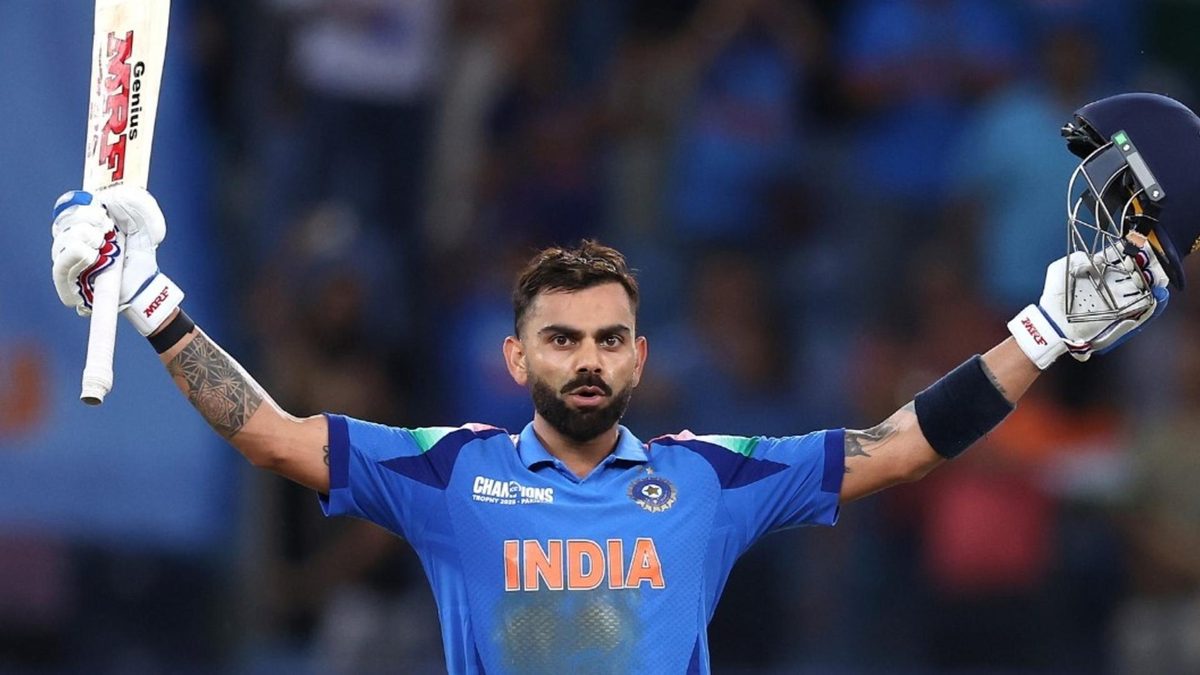
Virat Kohli’s innings against Pakistan was a testament to his adaptability as he found answers to his spin struggles, writes Sarah Waris.
The clamour had reached a crescendo. The loudest it had been throughout the day. India neared the target without breaking into a sweat but it was the busiest the fans had been in the game. Oohs for every miss, boos for every hit. The gap between the remaining runs and the deliveries left widened but the ongoing mini-battle was intense. Even bigger than the big game.
The man responsible for the commotion was once again Virat Kohli.
Averaging below 25 across formats since the start of 2024, each run scored by the maestro is now counted as a precious stone in his illustrious CV. Each cover drive - that does not lead to a dismissal with an outside edge, might I add - feels like a time travel to the glorious old days, while every hundred, now carefully preserved, is a celebration in the country weighed down by increasing political upheavals and decreasing hope.
Sunday was different.
Over the years, Kohli’s career had been about assembling runs like Jenga blocks while building India up. Against Pakistan, it was how his team dragged him, and eventually shoved him, towards the landmark.
A skipper who had turned an admirer for a moment, an all-rounder who denied an additional run to put him on strike. As the number of runs needed for India’s victory fell below what Kohli needed for his 51st ton, a sense of gloom befell. Before the unending jubilation.
India needed three, Kohli needed four. Axar Patel, who would have batted with more intent had it been any different, knocked a Khushdil Shah delivery to long-on for a single as all eyes firmly moved to jersey No.18. A shimmy down the track for a four, a quiet raise of the head. What was the fuss about, he queried after?
Kohli adapts against spin
It was almost befitting that Kohli’s winning runs came against a spinner whom he manoeuvred with clever footwork and a marked restraint in the innings. On the final ball, he let go of the angst and the frustration, one that seemed built up over the years due to dwindling performances against bowlers of that kind.
His falling spin game has been evident of late. Once averaging a mighty 69.50 against all slower bowlers between 2008 and 2018, his peak years in ODI cricket, Kohli averages a paltry 22.6 in his last seven innings. He has fallen to spin five times in this period, four times against leg spinners. Kohli also strikes at 74.3 and while this might be considered a small sample size, his prolonged struggles against the spinners in the IPL suggest it is not a recent development.
His innings against Pakistan, all joyous at the end, was not without challenges against the slower bowlers either but Kohli banked on his strengths, giving an exhibition on the fundamentals of ODI batting.
He walked out in the eighth over of the innings and moved to nine off his first 13 balls against pace, against whom he still has a healthy strike rate of 98.3 since the 2023 ODI World Cup ended. A detailed segment on the show Dressing Room after the game highlighted how Kohli kept a still head against the pacers who were touching 140kph regularly. But once they were removed from the attack, Kohli had to adapt.
A visible feature of Kohli's batting against spin has been his limited footwork against them of late. His inability to judge the length of the ball quickly enough and not read them from the hand has led to reduced productivity against spin. In 2019, a video uploaded by journalist Sandipan Banerjee on YouTube showed how Kohli was quick with his foot movement against the finger spinners during a net session but versus Pakistan, his first instinct was to go on the back foot against them.
Once adept at smothering deliveries from spinners through mid-wicket, mid-on or through the covers, Kohli was cautious in Dubai through the middle overs. Between overs 15-40, he faced 43 balls against spinners, scoring only 22 runs without a boundary. Kohli first faced spin in the innings in the 12th over, facing two balls from Abrar Ahmed, both of which were played off the back foot. In contrast, Shubman Gill played each of the four deliveries on the front in the over.
Sunil Gavaskar broke down the possible reason for his back foot commitment on air: “He’s not going onto the front foot, waiting for the ball to do its bit. He could have played forward, but he hasn’t. He got out playing forward to the leg-spinner Adil Rashid in the series against England. Rashid got him forward, getting the ball to turn.” Kohli was dismissed against Rashid in both the ODIs he played recently, departing both times to big turning deliveries that beat his edge as he was drawn forward.
Playing on the back foot against spin reduces the attacking range of a batter down to cross-batted shots, restricting the scoring rate especially if the idea is to eliminate risk (in which case the batter would reduce the usage of cross-batted shots).
While Kohli's struggle against the Pakistan spinners was a sad glimpse of waning reflexes, and even larger, his mortality in a game he had once bossed, he nonetheless had clear plans, using the crease well. He scored 31 runs against 55 balls of the spinners, and took on the pacers to make up for the declining run rate in the middle, scoring 69 off 56 against them with six fours.
Speaking about his strategy, he later said, “My job was to control the middle overs against the spinners without taking too many risks. Having clarity is important, it was important to understand that you need to get runs when there is pace on the ball, otherwise the spinners can dictate things.”
At the other end, Shreyas Iyer ensured the spinners did not create undue pressure on the Indian batters. He scored 39 in 45 balls against them, hitting four fours and a six at a strike rate of 87. While Iyer later hoped that India would have finished the game earlier, this innings was more about unmatched game awareness, and more crucially, execution of what Kohli had wanted to do. It is what has made him an ODI great.
In the end, it turned out to be all too comfortable against an attack lacking depth and just one specialist spinner, with a tougher opponent likely demanding a more aggressive approach from Kohli. He is unlikely to succeed with this gameplan against New Zealand, a side with a more formidable spin attack that will unleash themselves as soon as he walks out, but trust Kohli, who trained alone for nearly three hours a day before the Pakistan game, to come up with answers to his woes.
Yes, his innings was not as fluent and the run chase straightforward, but it was another quiet reminder that even when the magic fades, the method remains. He may not be the unstoppable force of old, but as long as there’s a challenge to conquer, he’ll find a way. Because that’s what Virat Kohli does.
Follow Wisden for all cricket updates, including live scores, match stats, quizzes and more. Stay up to date with the latest cricket news, player updates, team standings, match highlights, video analysis and live match odds.







